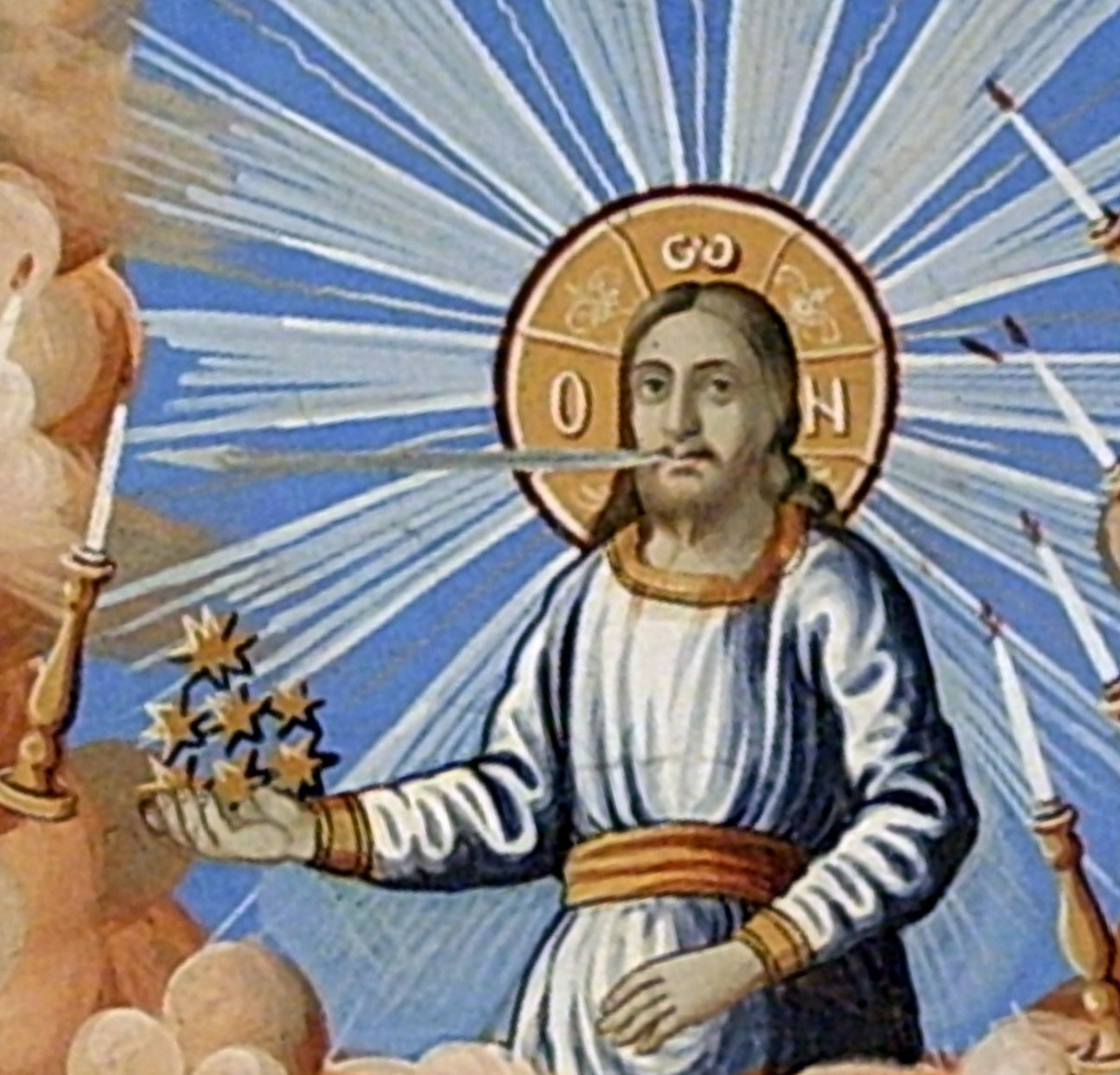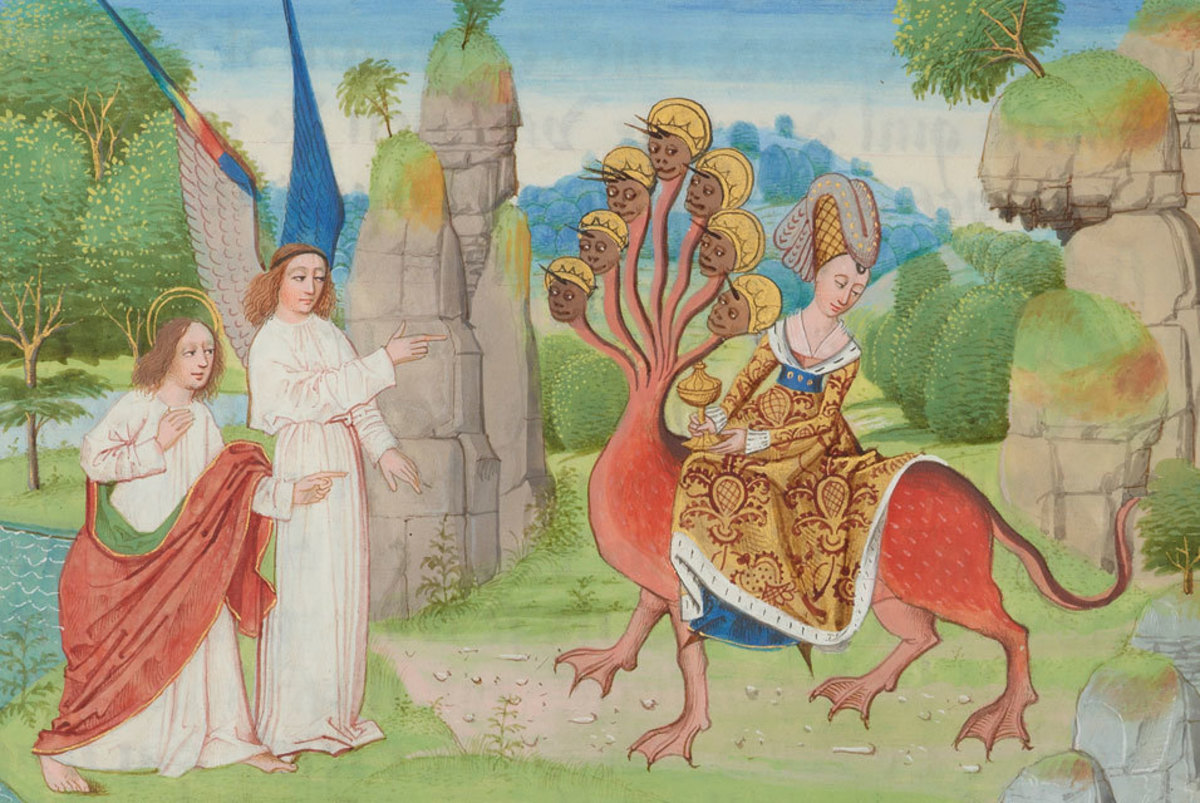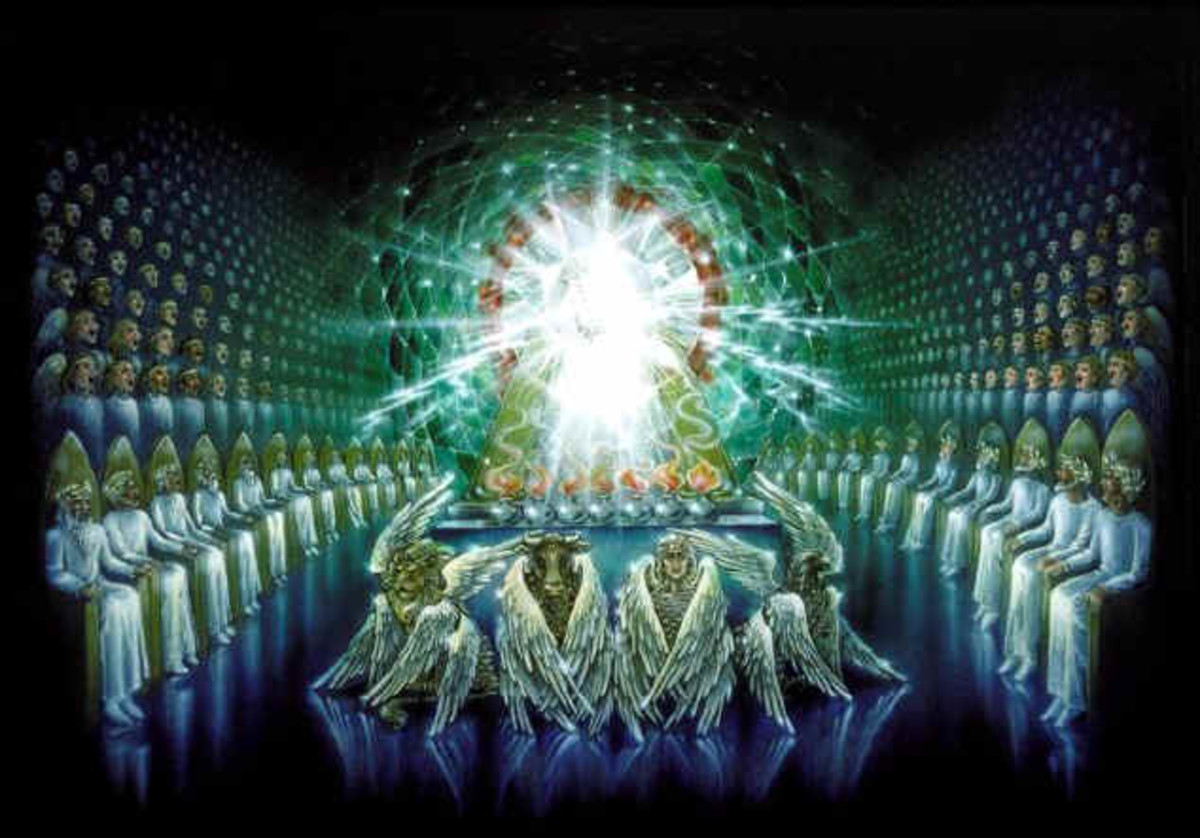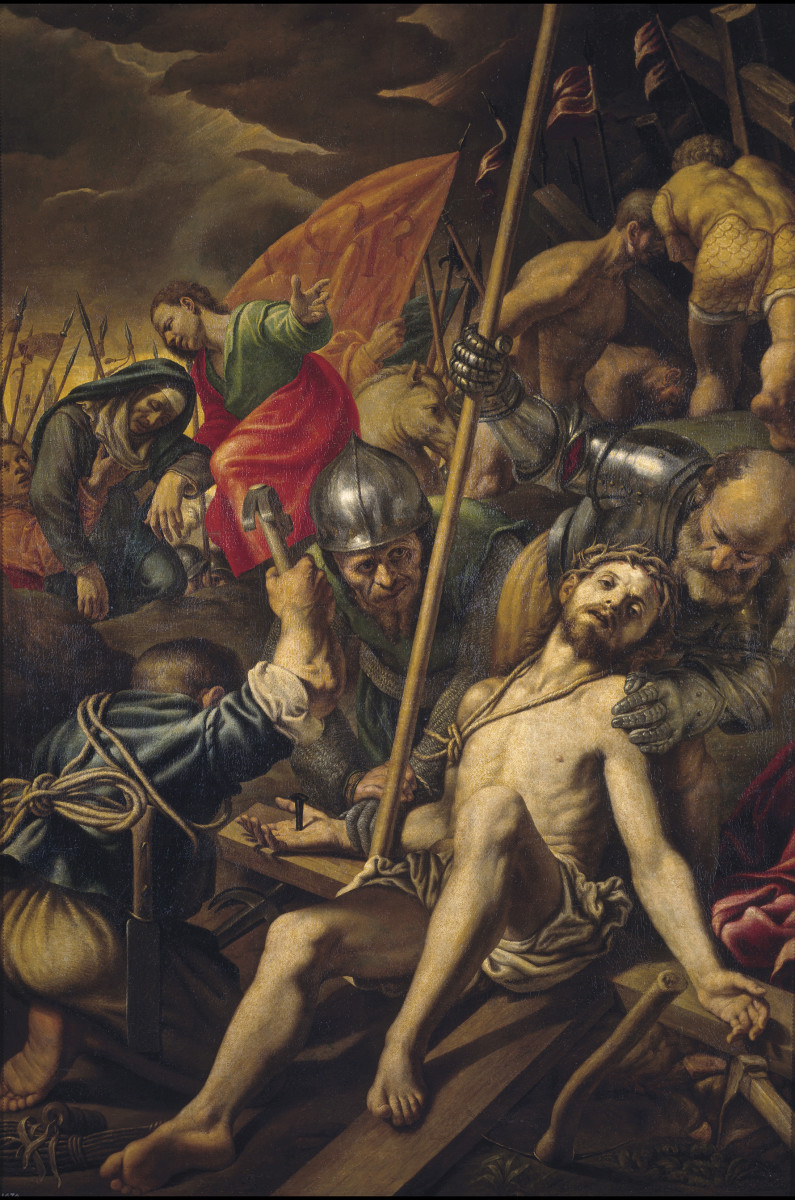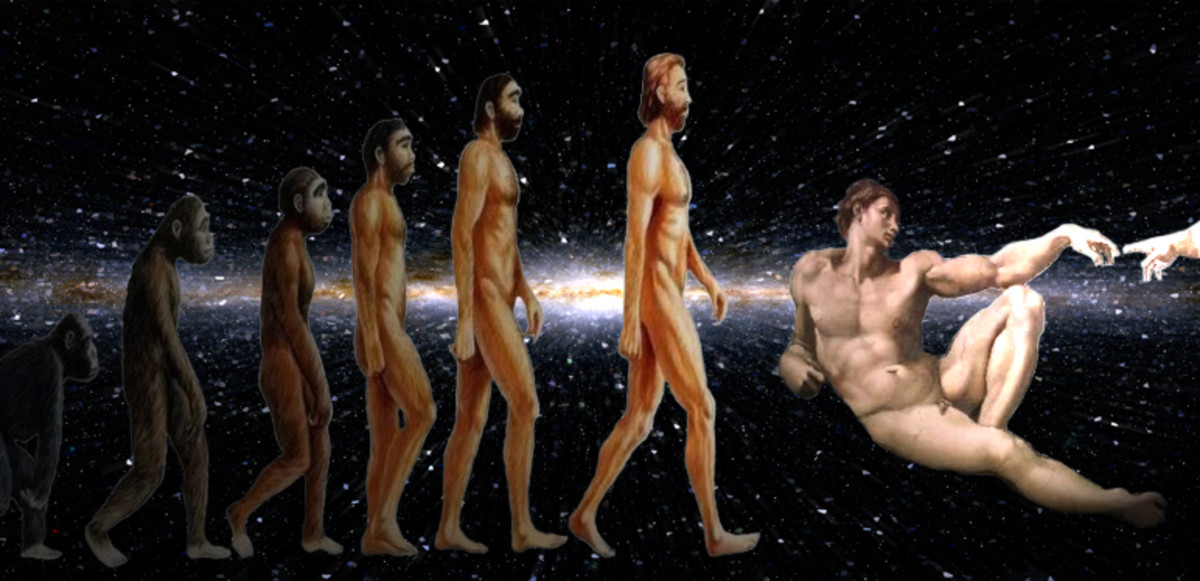The Literary Form of the Book of Revelation
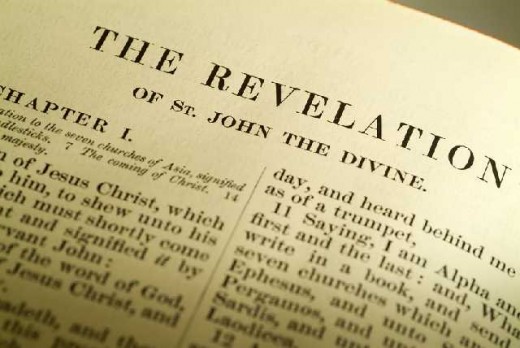
Revelation Series: Episode II
My last article addressed the proper method of interpretation for the book of Revelation. It seems to me that the natural subject to review at this point would be the characteristics of this particular book, and its literary form.
The opening verse of John’s manuscript establishes the very nature of the entire work. Notice this line: “and he sent and signified it by his angel” (Revelation 1:1). The Revelation is to be “signified” to John by the angel of Christ. The Greek word esemana, translated here as “signified,” is from the Greek sema; it answers to the English word—sign. Sema also means; to give a sign, or to make known. We may expect, then, for the subsequent revelations to be given to John in signs or symbolic images and language.
In this book of symbols, the number seven (7) plays an important role that can not be over emphasized. In the Revelation, seven is the divine number used to show completeness. It has been pointed out by others how the use of the number seven, in both the Revelation and the Fourth Gospel, is strong evidence of one author for both books. The use of this number in its symbolic sense is a characteristic of John the Apostle.
Concerning the number seven, the following information is very telling. The Revelation contains twenty-one groups of seven. As stated previously, symbols are central to this book, and numbers play a major role in the book’s symbolic nature. For instance, three is the number of confirmation. (Note: the law of witnesses was established in Deuteronomy 17:6 and 19:15.
According to this law of witnesses, any evidence for a matter must be confirmed by two or three witnesses. This rule of confirmation has been followed throughout Scripture [see Numbers 35:30, compare to Matthew 18:16; 2 Corinthians 13:1; 1 Timothy 5:13; Hebrews 10:28], and is employed often in the Revelation.) Therefore, the number twenty-one is key, because it is a multiple of seven by three; thus, showing that the number seven is confirmed by the number three as being the official number of the Revelation.
The number seven is regarded by the Hebrews as a sacred number; in that it represents completeness, or perfection, it is the covenant number throughout Scripture. It is a sign of God’s covenant relationship with mankind, and especially to the Church. This is evidenced in the hallowing of the seventh day; in the execution of circumcision, the sign of the covenant, after the seventh day; in the part played by the number in marriage covenants and treaties of peace. It is a number of purification and consecration (see Leviticus 4:6, 17; 8:11, 33; Numbers 19:20). Seven is the number of every grace and benefit bestowed upon Israel; which is thus marked as flowing out of the covenant, and consequence of it. The priests compassed Jericho seven days and on the seventh—seven times, that all Israel may know that the city was given into their hands by their covenant God, and that its conquest was a direct and immediate result of their covenant relationship to Him. Naaman is to dip in Jordan seven times, that he may acknowledge the God of Israel as the author of his cure. It is the number of reward to those who are faithful in the covenant (see Deuteronomy 28:7; 1 Samuel 2:5); of punishment to those who are froward in the covenant (see Leviticus 26:21, 24,28; Deuteronomy 28:25), or to those who injure the people of it (see Genesis 4:15, 24; Exodus 7:25; Psalms 79:12). All these things are ordered by the number seven, or else by seven multiplied by seven and thus made more intense still. Thus it is with Sabbath, the Passover, the Feast of Weeks, of Tabernacles, the Sabbath Year, and the Jubilee. It is also observed that God employs the number seven in His dealings with nations who are outside the covenant, showing that He is working for Israel’s sake with respect to His covenant. It is the number of years of plenty and famine, a sign that these are for Israel’s sake rather than for Egypt’s. Seven times over Nebuchadnezzar that he may learn that the God of his Jewish captives is King over all the earth. The number seven is just as prominent in the New Testament: showing the covenant of Calvary to be the Abrahamic covenant realized; showing the cross of Christ to be the fulfillment of Jeremiah’s prophecy given in Jeremiah 31:31.
Furthermore, there are seven petitions in the Our Father (Matthew 6:9-13); seven sayings of Christ from the cross; seven deacons (Acts 6:3); seven graces (Romans 12:6-8); seven characteristics of wisdom (James 3:17); etc...
Moreover, Hebrew literature is highly covert by nature, and the book of Revelation is, in point of fact, a Hebrew masterpiece—although it comes to us written in Greek. Since the book of Revelation is from the very beginning covert, instead of overt, one would expect the manuscript to require a specialized reading. The truth of its visions will not be found lying on the surface of its words, but hidden behind veils of symbolic images and language. No one will dispute the Hebraic nature of its writing and thought, throughout. The fingerprints of the Hebrew prophets such as Ezekiel, Daniel, and Zechariah are to be found all over the manuscript; this much is undeniable. In fact, the apocalypse is written to the motif of the Old Testament scripture almost in its entirety. We must notice Balaam (Revelation 2:14); Jezebel (Revelation 2:20); Michael the archangel (Revelation 7:7 compared to Daniel 10:13; 12:1); Abbadon (Revelation 9:11); seven headed beasts with ten horns (Revelation 13:1 compared to Daniel 7:7); the seven stars (Revelation 1:16 compared to Job 38:31 and Amos 5:8); the Euphrates River (Revelation 9:14); Sodom, Egypt (Revelation 11:8); Mount Sion (Revelation 14:1); Babylon (Revelation 16:19); Jerusalem (Revelation 21:2); Gog and Magog (Revelation 20:8 compared to Ezekiel chapters 38 and 39). Similarly, there is the tree of life (Revelation 2:7; 22:20); scepter of iron (Revelation 2:17); potters vessel (Revelation 2:27); the morning star (Revelation 2:28); the book of life (Revelation 3:5 compared to Exodus 32:32, 33). The tabernacle of Moses provides the motif for John’s description of Heaven (Revelation 4:6; 6:9; 9:19; 11:1, 19). The song of the Redeemed is, in fact, the song of Moses (Revelation 15:3 compared to Exodus 15:1-17). The great earthquake of chapter six recalls the prophet Haggai; the sun becoming black as sackcloth of hair and the moon becoming blood (Revelation 8) from Joel; the stars of heaven falling, the fig tree casting her untimely figs, the heavens departing as a scroll (Revelation 8) from Isaiah; the scorpions of Revelation chapter nine recall the prophet Ezekiel; the gathering of the vine of the earth (Revelation 14) from Joel, and the treading of the winepress in the same chapter from Isaiah. The vision of the glorified Christ (Revelation 1:12-20) connects with several of the prophets. For example: the golden candlesticks reflect Exodus and Zechariah; the garment down to the feet reflects Exodus and Daniel; the golden girdle and hair “white like wool” reflects Isaiah and Daniel; His feet “like unto fine brass” and “his voice as the sound of many waters” reflects Ezekiel; the “sharp two-edged sword” reflect Isaiah and the Psalms; the countenance as the sun reflects Exodus, Isaiah, Ezekiel, and Daniel. The laying of Jesus’ right hand upon John recalls a like event from the prophet Daniel.
Along with its Hebrew character (as demonstrated above) the book of Revelation is apocalyptic literature; and, as such, is highly symbolic in its language, in that one thing stands for another. However, the book often gives keys for interpreting its symbols; for example, stars are angels (Revelation 1:20); candlesticks (lamp stands) are churches (Revelation 1:20); the Harlot (Revelation 17:1) is Babylon (Revelation 17:5), aka Rome (Revelation 17:18); waters are people, multitudes, nations, tongues (Revelation 17:15); horns are kingdoms or power (Revelation 17:12); the heavenly Jerusalem is the Lamb’s wife (Revelation 21:9, 10), aka the Church; etc. Animals and colors are used symbolically as are numbers: for example three, seven, ten and twelve and multiples of the same. Gematria, a system of turning names into numbers and numbers into names, popular among the Hebrews, is employed by John to reveal (and at the same time conceal) the identity of the anti-Christ (Revelation 13:17, 18).
As concerning the order and structure of the book of Revelation, a few particulars must be pointed out from the very first. For instance, one should not expect the visions of the book to follow chronological order as John records them. There are eight primary visions in the book; seven of these visions overlap one another wholly or in part. The seven overlapping visions cover the history of the Church in seven different and distinct tiers of prophecy. The eighth vision is of eternity future. (See the chart below.) Eight is God’s personal number, and is used universally to represent infinity and new beginning. Hence, the reason the vision of eternity future is the eighth primary vision. Also, according to the science of Gematria,1the numerical value of the name Jesus is 888.
The following list gives the eight primary visions of the Revelation.
PRIMARY VISIONS OF REVELATION
- The Seven Churches (Revelation 1:9-3:22). This vision covers the entire history of the Church.
- The Book with the Seven Seals (Revelation 5:1-6:17; 8:1-9:21; 11:15-18). This is an overlapping vision that covers the entirety of the history of the Church.
- The Seven Personages (Revelation 11:19-14:20). A third overlapping vision also addressing the entire history of the Church.
- The Seven Vials of God’s Wrath (Revelation 15:1-16:22). This vision is limited in the scope of its reach; it overlaps the Seventh Seal – applies to the kingdom of the beast in the end of history.
- Mystery Babylon and Her Judgment (Revelation 17:1-19:10). This vision is of the entire age of the Church; Mystery Babylon is here viewed as the Church of Iniquity.
- King of kings Upon a White Horse Conquering By The Word of God (Revelation 19:11-21). This vision overlaps the time of the Wrath of God (vision number four).
- The Thousand Years Reign and the White Throne Judgment (Revelation 20:1-15). This vision is of the entire Church Age plus the final judgment.
- The New Heaven and the New Earth (Revelation 21:1-22:5). This vision is but a glimpse into eternity future.
Another characteristic of Revelation’s affinity with the number seven are the twenty-one sevens found within its pages. The number twenty-one is important because it is the number seven multiplied by three—three is the number of confirmation; thus, confirming that twenty-one is the official number of the book of Revelation.
The twenty-one sevens of the book of Revelation:
- The seven churches, 1:4-20; 2-3.
- The seven spirits, 1:4; 3:1; 4:5; 5:6.
- The seven candlesticks, 1:12-20; 2:1.
- The seven stars, 1:16-20; 2:1; 3:1.
- The seven lamps, 4:5.
- The seven seals, 5:1-5.
- The seven horns, 5:6.
- The seven eyes, 5:6.
- The seven angels, 8:2-6.
- The seven trumpets, 8:2-6.
- The seven thunders, 10:3-4.
- The seven thousand redeemed, 11:13.
- The seven heads, 12:3; 13:1; 17:3-9.
- The seven crowns, 12:3.
- The seven angels, 15:1-8; 21:9.
- The seven plagues, 15:1-8; 21:9.
- The seven vials, 15:7; 17:1; 21:9.
- The seven mountains, 17:9.
- The seven kings, 17:10-11.
- The seven beatitudes, 1:3; 14:13; 16:15; 19:9;
20:6; 22:7, 14. - The seven ‘I Am’s” of Christ, 1:8, 11, 17, 18; 21:6; 22:13,16.
Having shared these thoughts with you, it is my prayer that you prayerfully search out these matters, not only in the reading of scripture, but also in seeking the mind of the Spirit. The God of all peace keep you in His loving grace is my prayer for you all.
1. Gematria: Gematria or gimatria is a traditional Jewish system of assigning numerical value to a word or phrase, in the belief that words or phrases with identical numerical values bear some relation to each other, or bear some relation to the number itself. Although the term is Hebrew, it most likely derives from Greek geōmetriā, "geometry", which was used as a translation of gēmaṭriyā, though some scholars believe it to derive from Greek grammateia, rather; it's possible that both words had an influence on the formation of the Hebrew word. The word has been extant in English since the 17th century. Although ostensibly derived from Greek, it is largely used in Jewish texts, notably in those associated with the Kabbalah.
Apostolically Speaking
☩ J L Hayes
- When Was the Book of Revelation Written?
When the book of Revelation was written has everything to do concerning how the books prophecies are to be interpreted. The scholars are divided as to an early and late date. Which is correct?

